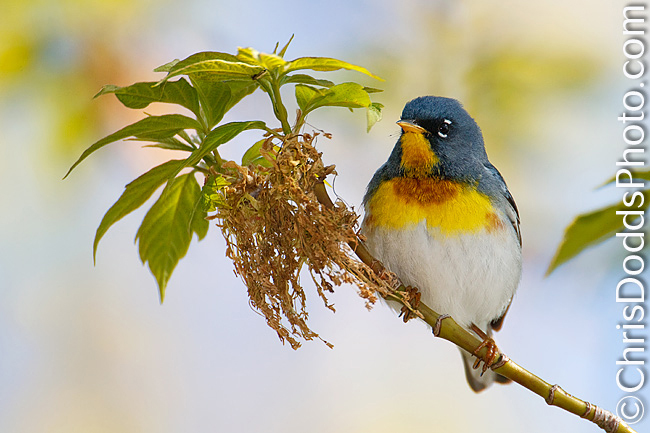Hi Chris! I'm a regular follower of your blog and recently saw your stunning Prothonotary Warbler with a reflection image. I have tried for years to see and photo of one without success. I understand why you may not answer, but are there any particular spots you can share? - Marc H, Toronto | Canada
I'm thrilled you enjoyed that Prothonotary Warbler shot with its reflection. It was a truly magical moment, and I completely understand your frustration about missing them at Pelee. These stunning, golden jewels of the warbler world can be elusive, and despite their vibrant plumage, it often seems like they are invisible!
While Point Pelee National Park is undoubtedly a hotspot during migration, and you can see them there, it's not always a guaranteed sighting. Prothonotary Warblers are particular about their breeding habitat; favouring flooded bottomland forests and swamps with standing water and decaying trees for nesting cavities. This specialized preference means they aren't as widespread as other warbler species.
So, if you're like me and want to stack the odds in your favour for a reliable Prothonotary Warbler encounter in Ontario, here are a few spots that have a strong track record:
The Best Bets for Prothonotary Warblers in Ontario:
Hillman Marsh Conservation Area (near Point Pelee): Often overlooked by those rushing straight to Pelee, Hillman Marsh is arguably the most reliable spot in Ontario for breeding Prothonotary Warblers. The extensive flooded woodlands and marshy areas here provide an ideal nesting habitat.
Tips for viewing: Focus your efforts along the dike trails, particularly in the sections bordering the wet woodlands. Listen for their loud, ringing "sweet-sweet-sweet-sweet" song. Early mornings are best.
Rondeau Provincial Park: Located on the north shore of Lake Erie, Rondeau boasts significant tracts of Carolinian forest and extensive wetlands, making it prime Prothonotary Warbler territory.
Tips for viewing: Explore the various trails, especially those that venture into wetter, swampier areas. The Tulip Tree Trail and the South Point Trail can be productive. Again, listen to their distinctive song as they hide high in the canopy.
Long Point Causeway and Provincial Park: The Long Point region, a UNESCO Biosphere Reserve, is a significant bird migration corridor and also offers suitable breeding habitat for Prothonotaries, particularly in the more secluded wet woodlands.
Tips for viewing: While you can find them within the provincial park, check out some less-trafficked areas along the causeway and adjacent conservation areas with flooded timber.
When to Look:
The key to spotting Prothonotary Warblers is timing. They typically arrive in Ontario in late April to early May and breed through the summer. Your best chances for seeing them, and especially hearing their unmistakable song, are from mid-May through June. By July, they can become quieter as the breeding season winds down, and by August, they begin their southward migration.
A Few Prothonotary Warbler Tips:
Listen for the song: Their loud, clear "sweet-sweet-sweet-sweet" is often your first clue to their presence, especially when hiding in the dense foliage.
Focus on habitat: Look for areas with standing water, dead trees, and dense undergrowth in a flooded woodland environment.
Be patient: Like all good birding, patience is key. Find a promising spot, sit quietly, and let the birds come to you.
Bring bug spray: These wet environments are also mosquito heaven, so come prepared!
So, while Point Pelee will always hold a special place in our birding hearts, I recommend expanding your search to Hillman Marsh and Rondeau if you're serious about adding the Prothonotary Warbler to your Ontario life list.
Prothonotary warbler (Protonotaria citrea, Pauline orangée, Protonotaria citrea, PROW). From my Songbirds of Pelee Workshop, May 2025, at Point Pelee National Park of Canada. Image Copyright ©Christopher Dodds. Sony a9 III Mirrorless camera & Sony FE 400-800mm f/6.3-8 G OSS Lens @800mm ISO 10,000, f/8 @ 1/5,000s. Manual exposure.










